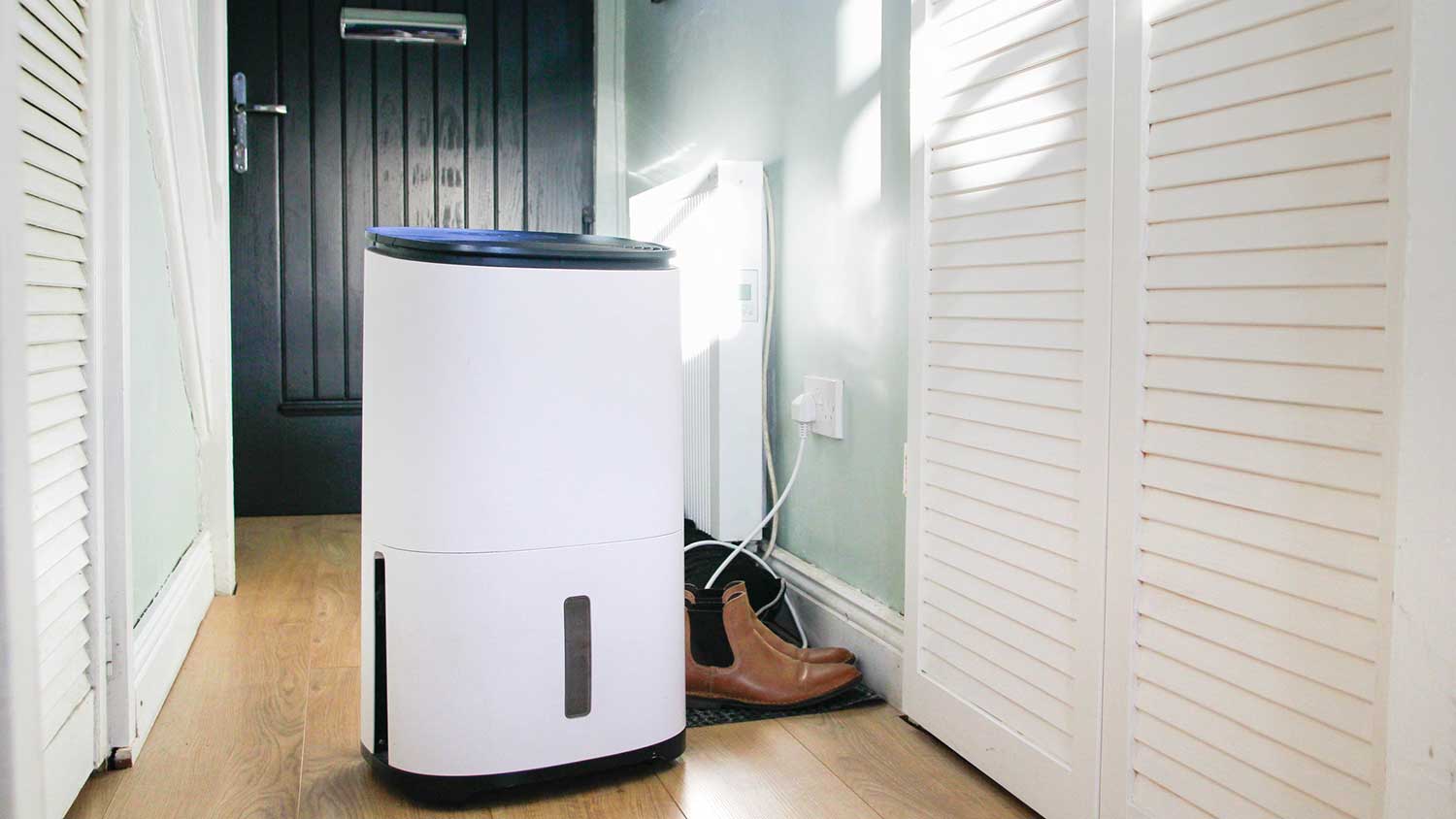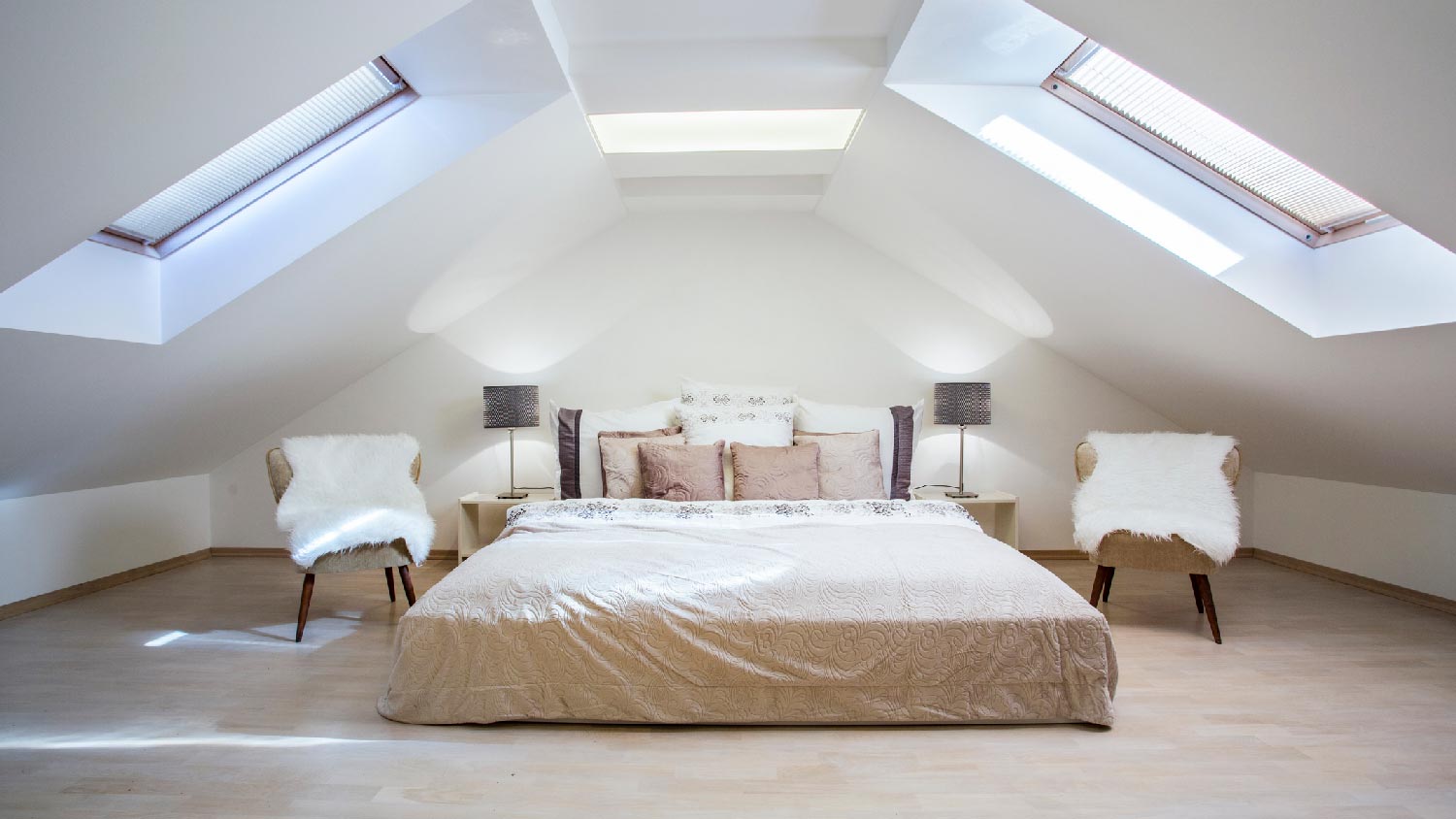What Is an Outdoor Forced-Air Wood Furnace and Is It Right for Your Home?
Heat up your home from the inside out


Outdoor forced-air wood furnaces are heating devices for your home.
They sit outside of your house rather than in your basement or attic.
These furnaces burn wood to create heat, which enters your house through ducts.
They’re best for people who have access to free or low-cost wood.
Outside furnaces are similar to outdoor boilers (with a few differences).
When you think about where to install a new furnace, your first thought is probably your basement or utility closet. But in some cases, you might be able to add a furnace to the outside—rather than the inside—of your house. Known as outdoor forced-air wood furnaces, these devices could make sense, depending on where you live and the resources available in your area. Here’s how to figure out if this type of furnace is right for you.
What Is an Outdoor Forced-Air Wood Furnace?
Like its indoor counterpart, a forced-air outdoor wood furnace is a heating device that uses burning wood to heat your house. These types of furnaces can heat a single room or your entire house, depending on the model that you pick and the size of your home.
How Do Outdoor Wood Furnaces Work?
As the name would suggest, these devices sit outside of your property. Wood burns in the firebox (which also serves as the heat exchanger) and produces hot air that rises into the metal plenum above. From there, an electric fan pushes the heat into your home through a duct system.
How Much Does an Outdoor Forced-Air Wood Furnace Cost?
Outdoor wood furnace prices vary depending on a few factors, including the brand and size of the unit. Smaller outdoor forced-air wood furnaces are effective for more compact spaces (like garages, barns, or sheds), but if you size up, you could generate enough heat to warm up your basement or whole home. If you have a larger home, you’ll need a larger furnace with more BTUs. BTUs, which stands for British Thermal Unit, are a measure of how much energy your furnace uses to warm your home.
In general, you can expect to pay between $6,000 and $12,000 before installation. You can save a bit of money if you DIY an outdoor wood forced-air furnace, but be aware that it’s a potentially dangerous job that involves heavy equipment and electrical and ducting work.
Even if you are typically a hands-on person, a better (and safer) option is to hire a furnace installer near you. Not only can they manage the entire installation process, but they can also assess your space and help you decide which type of outdoor wood furnace is best for your home.
You’ll want to buy a furnace with 30 to 60 BTUs for every square foot of space in your home. People in warmer areas may only need a furnace with 10 to 15 BTUs per square foot.
Common Uses for Forced-Air Wood Furnaces
So, why would you consider installing a forced-air wood furnace over other types of heating systems? For one, if you live in a rural area where you can’t easily access natural gas or electricity, then an outdoor wood furnace might be a good heating option for your home. Similarly, if you have ample access to firewood, using a forced-air wood furnace can be an affordable way to heat your home.
Pros and Cons of Outdoor Wood Furnaces

Not sure if an outdoor forced-air wood furnace is right for you? Consider these pros and cons.
| Pros | Cons |
|---|---|
| Doesn’t take up space inside | A lot of maintenance involved |
| Wood is more affordable than other fuel sources | Installation can be costly |
| Less risk of a house fire | Must be meticulous about wood storage |
Pros
Unlike traditional indoor furnaces, outdoor versions don’t take up room in your home. If you don’t have enough space for a basement or attic furnace, installing a furnace outside might be wise.
Affordability is another advantage of outdoor wood furnaces. Wood is more affordable than many other fuel types—especially if you already have a lot of it on your property.
Outdoor furnaces can be safer than indoor ones. By placing your furnace outside rather than inside, you may be able to reduce your risk of a house fire.
Cons
Tending to a wood furnace can be tedious work. Not only do you have to have a steady supply of timber (and space to store it), but you also need to load your furnace with wood every day.
There’s a good amount of clean-up needed to run a wood furnace. When moist wood burns, it creates a dangerous and flammable substance called creosote. It needs to be removed to keep your furnace operating safely. You’ll also have to dispose of the ashes regularly.
While outdoor furnaces can save you money over time, they can be costly to purchase and install.
Outdoor Wood Forced-Air Furnace vs. Outdoor Wood Boiler
In many ways, outdoor wood furnaces are similar to outdoor wood boilers.
| Outdoor Forced-Air Wood Furnace | Outdoor Wood Boiler |
|---|---|
| Wood-burning | Wood-burning |
| Uses a fan and air to circulate heat | Uses a pump and water to circulate heat |
| Operates with ductwork | Operated with pipes |
| Needs to be close to the home | Can be farther away from the home |
| Less costly | More costly |
| Not as efficient as wood boilers | More efficient than wood forced-air furnaces |
At a basic level, both are wood-burning devices that sit outside and warm your home. An average outdoor wood-fueled boiler costs between $7,000 and 16,000. An average outdoor forced-air wood furnace costs slightly less at $6,000 to $12,000 (but its life span is also lower than that of a wood boiler).
With that said, there are some big differences between the two heating devices. Most importantly, furnaces rely on air to circulate heat through your home, while boilers use water. And while a furnace transfers heat into your home through ductwork, a boiler heats up a “water jacket” around the firebox, then pumps warmed-up water through a set of pipes and into your house.
It’s also important to note that there may be additional expenses associated with both outdoor furnaces and outdoor boilers. For instance, with a furnace, you may have to cover air duct replacement costs. For boilers, you’ll have to factor in piping-related costs. But after installation, both outdoor wood furnaces and boilers can be less expensive to run than other heating systems—as long as you have a steady supply of wood.
Frequently Asked Questions
One disadvantage of a wood furnace is that you need a constant supply of wood to run it. Even if you have a good amount of wood on your property (or have another way to get affordable wood), you’ll still need to chop it, store it, and re-fuel your furnace with it to keep your house heated.
An outdoor wood furnace might be worth it, depending on your situation. For example, if you can easily (and affordably) acquire wood to burn, then an outside furnace could make sense. Investing in an outdoor furnace might also be worth it if you live in a rural area without a reliable energy source.





- Furnace Repair
- Air Conditioning Repair
- HVAC Repairs
- Furnace Installation
- Wood & Pellet Stove Repair
- Dehumidifier & Humidifier Repair
- Heat Pump Companies
- Swamp Cooler Repair
- Wood Stove Services
- HVAC Companies
- Commercial A/C Repair
- Geothermal Installation
- Air Conditioning Installation
- Boiler Repair
- 24 Hour Furnace Repair
- Geothermal Repair
- Heat Pump Repair
- Humidifier Installation
- Thermostat Repair
- Thermostat Installation
- Nest Installation
- Heating & Cooling
- Heating Repair
- Furnace Cleaning
- Furnace Tune-Up
- HVAC Technicians
- Subcontractors
- Furnace Maintenance
- Plumbing & Heating Companies
- Wood Stove Inspection
- Mini Split Installation
- Wall Heater Repair
- Duct Installers
- Boiler vs. Furnace: What Are the Differences?
- 5 Types of Furnaces: Pros, Cons, and Which Is Best for Your Home
- What Size Furnace Do I Need? Your Guide to Finding the Perfect Fit
- What Is a Wall Furnace? How It Works and What It Does
- How Does a Furnace Work? Breaking Down the Process of Gas, Oil, Electric, and Propane Heating
- Furnace Fan Guide: When to Run the Furnace Fan
- How to Change a Furnace Filter in 5 Simple Steps
- What Should You Do If Your Furnace Smells Like Gas?
- Should I Replace the Blower Motor or Buy a New Furnace?
- How to Bleed a Furnace in 8 Steps for More Efficient Heating











